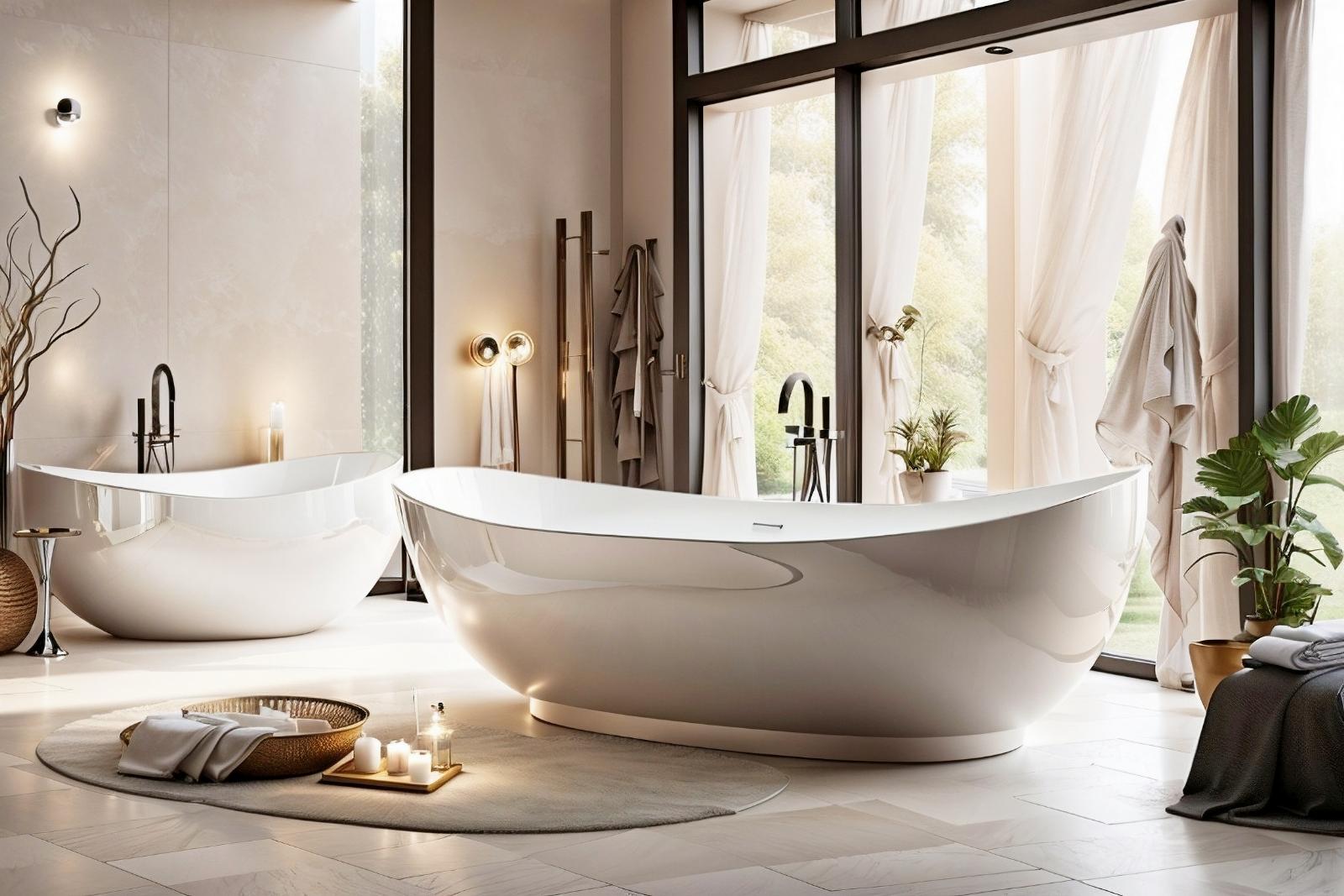What is the meaning of the furniture term Second Empire?
Answer: The furniture style Second Empire refers to a design and architectural style that originated in France in the mid-19th century during the reign of Napoleon III (1852-1870). It is named after the Second French Empire, which was characterized by a return to authoritarian rule and a focus on opulence and grandeur... read more
| Previous term: Secession | Next term: Secret Drawer |
Luxurious Freestanding Bathtubs
Freestanding bathtubs serve as luxurious statement pieces that add an element of elegance and style to any bathroom. These bathtubs are often designed with sleek lines and contemporary shapes, offering a visually pleasing focal point in the space. Guidance and information on freestanding bathtubs.

Freestanding bathtubs serve as luxurious statement pieces that add an element of elegance and style to any bathroom. These bathtubs are often designed with sleek lines and contemporary shapes, offering a visually pleasing focal point in the space. Guidance and information on freestanding bathtubs.

What is the meaning of the furniture term Second Empire?
In terms of furniture, the Second Empire style is characterized by its lavishness, elaborate ornamentation, and a combination of historical revivalism and modern innovation. It often incorporated elements from various historical periods such as the Baroque, Rococo, and Renaissance, blending them with contemporary design elements.
Common features of Second Empire furniture include:
1. Rich Materials: Furniture pieces were often crafted using luxurious materials such as mahogany, rosewood, walnut, and ebony. These wood types were typically embellished with intricate carving, gilding, and other decorative techniques.
2. Elaborate Details: Second Empire furniture is known for its ornate embellishments and detailing. This can include motifs such as acanthus leaves, scrolls, floral patterns, and medallions. The use of curved lines and intricate moldings is prevalent.
3. Upholstery: Upholstery in Second Empire furniture is usually luxurious and extravagant. It often features richly patterned fabrics, such as silk, velvet, or brocade, incorporating intricate weaves and bright colors.
4. Curved and Sinuous Forms: Second Empire furniture tends to have curvilinear elements, with an emphasis on asymmetry and decorative fluidity. This can be seen in the flowing lines of chairs, sofas, and other seating pieces.
5. Iconic Pieces: The style includes iconic furniture pieces such as the double-ended chaise longue called recamier, the bergere armchair, the gueridon side table, and the vitrine display cabinet.
The Second Empire style was prevalent not only in furniture but also in architecture, interior design, and other decorative arts during the mid-19th century in various parts of Europe and North America.
French period of artistic opulence marked by mixture of Rococo and Renaissance.
In terms of furniture, the Second Empire style is characterized by its lavishness, elaborate ornamentation, and a combination of historical revivalism and modern innovation. It often incorporated elements from various historical periods such as the Baroque, Rococo, and Renaissance, blending them with contemporary design elements.
Common features of Second Empire furniture include:
1. Rich Materials: Furniture pieces were often crafted using luxurious materials such as mahogany, rosewood, walnut, and ebony. These wood types were typically embellished with intricate carving, gilding, and other decorative techniques.
2. Elaborate Details: Second Empire furniture is known for its ornate embellishments and detailing. This can include motifs such as acanthus leaves, scrolls, floral patterns, and medallions. The use of curved lines and intricate moldings is prevalent.
3. Upholstery: Upholstery in Second Empire furniture is usually luxurious and extravagant. It often features richly patterned fabrics, such as silk, velvet, or brocade, incorporating intricate weaves and bright colors.
4. Curved and Sinuous Forms: Second Empire furniture tends to have curvilinear elements, with an emphasis on asymmetry and decorative fluidity. This can be seen in the flowing lines of chairs, sofas, and other seating pieces.
5. Iconic Pieces: The style includes iconic furniture pieces such as the double-ended chaise longue called recamier, the bergere armchair, the gueridon side table, and the vitrine display cabinet.
The Second Empire style was prevalent not only in furniture but also in architecture, interior design, and other decorative arts during the mid-19th century in various parts of Europe and North America.
French period of artistic opulence marked by mixture of Rococo and Renaissance.